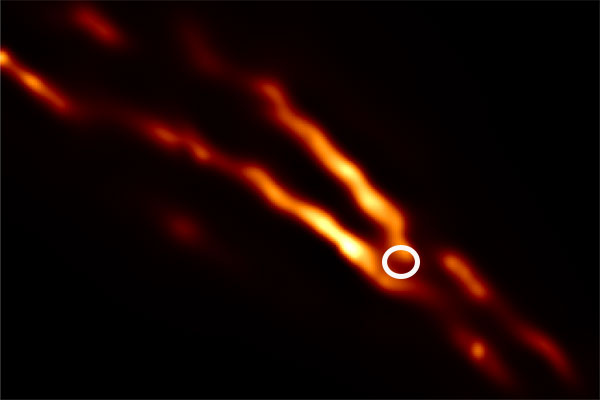
The Hubble Space Telescope studied the region around Sagittarius A* in infrared light to produce this image, released in 2009.

"It's like two telescopes, basically, observing simultaneously." The continuous observations at both wavelengths should allow scientists to distinguish between Sagittarius A* and its flares. "Having the ability to simultaneously observe the flaring events at near-infrared and mid-infrared as far as I know has never been done before," Yusef-Zadeh said. Moreover, Webb boasts two instruments that can simultaneously gather data in two different types of infrared light. And the distant vantage point, along with the observatory's massive sunshield, keep its instruments cold enough to study infrared light. Orbiting a point nearly 1 million miles (1.5 million kilometers) from Earth, there's no cloudy weather to interfere with observations. JWST brings several strengths to the collaboration. "You need to take out the variable component to really construct a proper image of the source itself." "This is the worst thing that can happen to imaging a black hole, because you don't want to observe a variable source," Yusef-Zadeh said.

And coincidentally, it's submillimeter radiation that the Event Horizon Telescope gathers to make its black hole images - which means that EHT scientists are detecting the signal of the underlying black hole and that of the flare. Something must have really accelerated them to go to close to the speed of light, and we still don't know what it is."Įach flare is first visible in infrared light, but over time the signal stretches into what astronomers call submillimeter radiation.

"Flares are particles like cosmic ray particles that are moving close to the speed of light. "We still don't know how flares are produced," Yusef-Zadeh said. (Image credit: Event Horizon Telescope collaboration)

An image of the supermassive black hole at the center of the Milky Way, a behemoth dubbed Sagittarius A*, revealed by the Event Horizon Telescope on May 12, 2022.


 0 kommentar(er)
0 kommentar(er)
